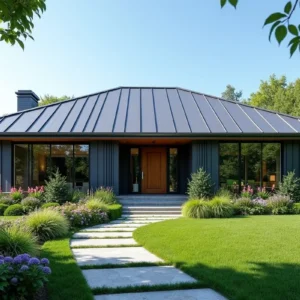As the world of work continues to change, so does the commercial real estate landscape. From the rise of remote work to the increasing importance of sustainable design, various factors are shaping the future of office space. Navigating these changes can be complex, but your source for top-rated commercial real estate listings can help businesses find the perfect solution.
The shift to remote work has fundamentally altered the demand for traditional office space. Remote work, once a perk, has become necessary for many businesses worldwide. This significant change has led companies to reevaluate their real estate needs. Rather than maintaining large, centralized office spaces, many companies are now opting for smaller, more versatile offices that can accommodate hybrid work models.
In a hybrid setup, employees split their time between working from home and being in the office, which requires flexible spaces that can adapt to varying numbers of occupants.
The popularity of flexible workspaces is rising, with many businesses seeking to reduce their permanent office space while maintaining a physical presence. According to Forbes, the trend of hybrid workplaces is here to stay, making flexibility a critical consideration in commercial real estate. This shift is about space-saving and creating environments that foster productivity and collaboration for both in-office and remote workers.
Contents
Sustainability Takes Center Stage
Sustainable design is no longer just a buzzword; it has become a pivotal factor in commercial real estate. With growing awareness of environmental issues and the impact buildings have on the planet, energy-efficient buildings are in high demand. These buildings reduce environmental impact and offer long-term savings through reduced utility bills and lower maintenance costs.
The Natural Resources Defense Council points out that eco-friendly buildings can improve health and productivity among occupants, making them highly attractive to businesses and investors. This focus on sustainability extends to materials used in construction, the incorporation of renewable energy sources, and features that promote water conservation.
Sustainable buildings also appeal to employees who prioritize working for environmentally responsible companies, aiding in talent attraction and retention.
The Rise of Smart Buildings
Technology is playing a central role in transforming office spaces. Smart buildings with IoT devices, advanced security systems, and energy management solutions are becoming increasingly popular. These innovations provide better control over building operations, enhance security, and improve the tenant experience.
Smart buildings can monitor and manage lighting, heating, air conditioning, and security systems remotely, which leads to increased efficiency and significant cost savings.
Furthermore, the use of technology in buildings enhances tenant comfort and satisfaction. For example, smart lighting systems can adjust based on natural light levels or occupancy, improving energy efficiency and occupant comfort.
Advanced security systems, including facial recognition and biometric access, enhance safety and streamline entry, making buildings more secure and user-friendly. As businesses prioritize technology integration, the demand for smart buildings is expected to grow.
Flexible Leasing Options
Flexible leasing options are gaining traction as businesses seek to adapt rapidly to changing circumstances. The economic uncertainty brought about by the pandemic has made long-term commitments less appealing.
Short-term leases, coworking spaces, and lease restructuring are becoming more common, allowing companies to expand or downsize without long-term obligations. This flexibility allows businesses to respond more swiftly to market changes and internal needs.
Additionally, flexible leases can provide significant financial benefits. Businesses can avoid the high upfront costs associated with long-term leases and reallocate those funds toward growth opportunities.
Coworking spaces, in particular, offer shared amenities and networking opportunities, which can benefit smaller businesses and startups. This adaptability is crucial in an era of economic uncertainty and rapid technological change, where the ability to pivot quickly can be a significant competitive advantage.
Emphasis on Collaboration Spaces
Modern office designs prioritize teamwork and social interaction, incorporating open-plan areas, breakout rooms, and communal lounges. These spaces stimulate creativity and team dynamics with comfortable seating, vibrant colors, and flexible furniture.
This approach enhances innovation and performance, promoting a culture of collaboration in businesses.
Location and Accessibility
Location is crucial in commercial real estate, as it enhances employees’ work-life balance, reduces commute times, and improves employee satisfaction. Factors like walkability, green spaces, and nearby restaurants are important for businesses.
A prime location attracts talent, improves employee well-being, and leads to higher productivity and lower turnover rates. Staying informed about office space trends helps businesses make strategic decisions for their operations and employees.





